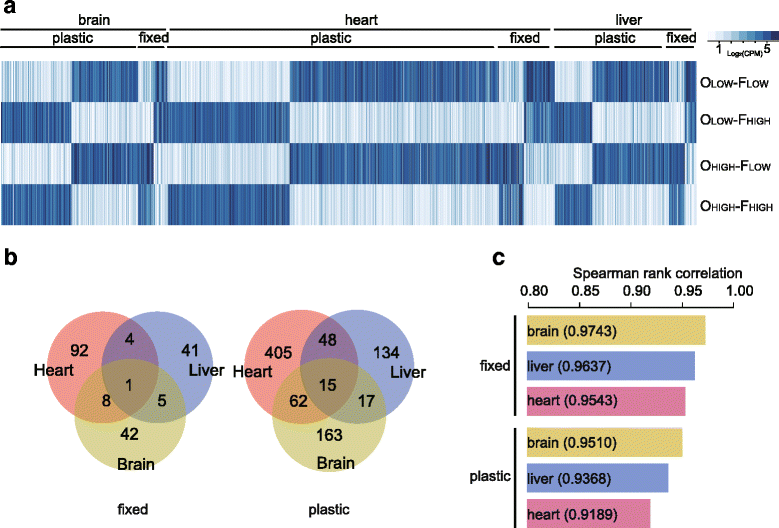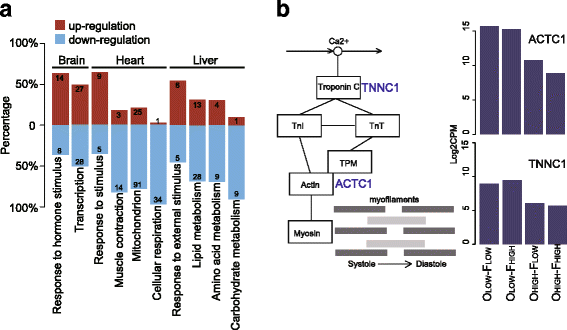Gene expression variations in high-altitude adaptation: a case study of the Asiatic toad (Bufo gargarizans)
- PMID: 28673260
- PMCID: PMC5496230
- DOI: 10.1186/s12863-017-0529-z
Gene expression variations in high-altitude adaptation: a case study of the Asiatic toad (Bufo gargarizans)
Abstract
Background: Genome-wide investigation of molecular mechanisms for high-altitude adaptation has attracted great attention in the last few years. In order to understand the contribution of gene expression level variations to high-altitude adaptation in Asiatic toads (Bufo gargarizans), we implemented a reciprocal transplant experiment between low- and high-altitude sites and sequenced 12 transcriptomes from brain, heart, and liver tissues.
Results: A large number of genes with expression differences (DEGs) between high- and low-altitude individuals (193 fixed and 844 plastic) were identified, and the majority of them were tissue specific. Heart displayed the largest number of DEGs, both plastic and fixed. Fixed DEGs were particularly concentrated in functions associated with muscle contraction, and the majority of them were down-regulated in high-altitude individuals. Plastic DEGs were highly concentrated in several energy metabolism related functional categories, and the majority of them were also down-regulated at high-altitude environments. In liver samples, genes associated with nutrient metabolism experienced a broad-scale expression down-regulation in high-altitude toads.
Conclusions: These broadly suppressed expression patterns at high altitudes are in strong contrast to those of endothermic homeotherms, suggesting poikilothermic vertebrates may have adopted different strategies at high altitudes. Our results strongly support that both genotypic specialization and phenotypic plasticity play crucial role in adaptation to high altitude for Asiatic toads. Poikilothermic vertebrates are among the most hypoxia-tolerant animals known, and many molecular mechanisms remain elusive. We hope that our results will provide useful directions for future research.
Keywords: Cardiac functions; Down-regulation; Gene expression; High-altitude; Nutrient metabolism; Toads.
Conflict of interest statement
Ethics approval and consent to participate
All fieldwork and animal specimen collection were conducted legally. This study does not involve any species at risk of extinction. Animal collection and utility protocols were approved by the Chengdu Institute of Biology Animal Use Ethics Committee.
Consent for publication
Not applicable.
Competing interests
The authors declare that they have no competing interests.
Publisher’s Note
Springer Nature remains neutral with regard to jurisdictional claims in published maps and institutional affiliations.
Figures



References
Publication types
MeSH terms
LinkOut - more resources
Full Text Sources
Other Literature Sources

